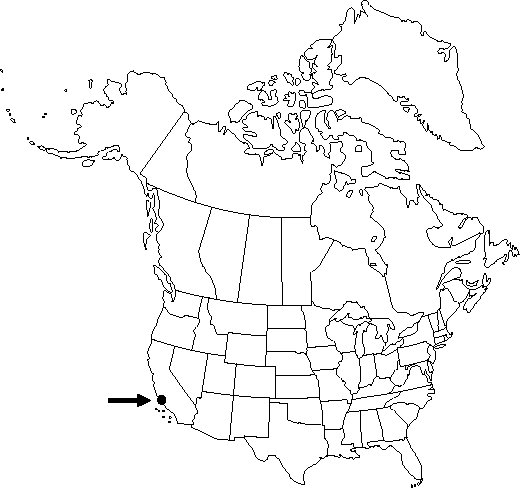Delphinium parryi subsp. blochmaniae
Brittonia 8: 19. 1954.
Roots less than 10 cm. Stems (19-)30-50(-65) cm. Leaves: basal leaves usually absent at anthesis; blade with ultimate lobes 7-25, width less than 3 mm. Inflorescences: bracteoles 7-10 mm. Flowers: sepals reflexed, lateral sepals 16-25 mm, spurs 11-16 mm; lower petal blades 7-10 mm, colored lighter than sepals (more so when dry). 2n = 16.
Phenology: Flowering early spring.
Habitat: Coastal chaparral, deep sand of dunes
Elevation: 0-200 m
Discussion
Of conservation concern.
Delphinium parryi subsp. blochmaniae is very local; no other Delphinium is normally found within its limited range. It is easily recognized by its very large sepals and lower petals. The only species with which it might be confused is the large-flowered phase of D. variegatum; the latter has long hairs on proximal petioles vs. long hairs absent in D. parryi subsp. blochmaniae.
Selected References
None.

